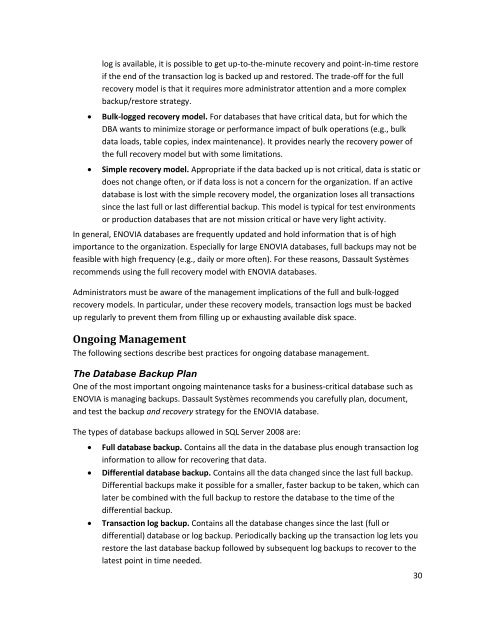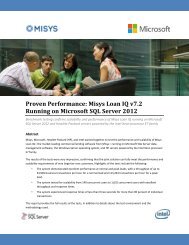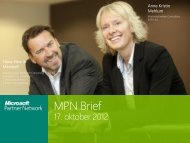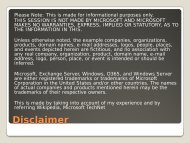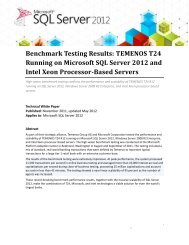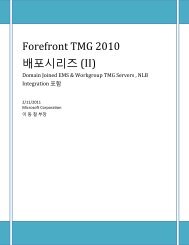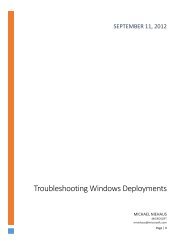Best Practices for Running Dassault Systèmes ENOVIA ... - Microsoft
Best Practices for Running Dassault Systèmes ENOVIA ... - Microsoft
Best Practices for Running Dassault Systèmes ENOVIA ... - Microsoft
You also want an ePaper? Increase the reach of your titles
YUMPU automatically turns print PDFs into web optimized ePapers that Google loves.
log is available, it is possible to get up-to-the-minute recovery and point-in-time restoreif the end of the transaction log is backed up and restored. The trade-off <strong>for</strong> the fullrecovery model is that it requires more administrator attention and a more complexbackup/restore strategy.Bulk-logged recovery model. For databases that have critical data, but <strong>for</strong> which theDBA wants to minimize storage or per<strong>for</strong>mance impact of bulk operations (e.g., bulkdata loads, table copies, index maintenance). It provides nearly the recovery power ofthe full recovery model but with some limitations.Simple recovery model. Appropriate if the data backed up is not critical, data is static ordoes not change often, or if data loss is not a concern <strong>for</strong> the organization. If an activedatabase is lost with the simple recovery model, the organization loses all transactionssince the last full or last differential backup. This model is typical <strong>for</strong> test environmentsor production databases that are not mission critical or have very light activity.In general, <strong>ENOVIA</strong> databases are frequently updated and hold in<strong>for</strong>mation that is of highimportance to the organization. Especially <strong>for</strong> large <strong>ENOVIA</strong> databases, full backups may not befeasible with high frequency (e.g., daily or more often). For these reasons, <strong>Dassault</strong> Systèmesrecommends using the full recovery model with <strong>ENOVIA</strong> databases.Administrators must be aware of the management implications of the full and bulk-loggedrecovery models. In particular, under these recovery models, transaction logs must be backedup regularly to prevent them from filling up or exhausting available disk space.Ongoing ManagementThe following sections describe best practices <strong>for</strong> ongoing database management.The Database Backup PlanOne of the most important ongoing maintenance tasks <strong>for</strong> a business-critical database such as<strong>ENOVIA</strong> is managing backups. <strong>Dassault</strong> Systèmes recommends you carefully plan, document,and test the backup and recovery strategy <strong>for</strong> the <strong>ENOVIA</strong> database.The types of database backups allowed in SQL Server 2008 are:Full database backup. Contains all the data in the database plus enough transaction login<strong>for</strong>mation to allow <strong>for</strong> recovering that data.Differential database backup. Contains all the data changed since the last full backup.Differential backups make it possible <strong>for</strong> a smaller, faster backup to be taken, which canlater be combined with the full backup to restore the database to the time of thedifferential backup.Transaction log backup. Contains all the database changes since the last (full ordifferential) database or log backup. Periodically backing up the transaction log lets yourestore the last database backup followed by subsequent log backups to recover to thelatest point in time needed.30


